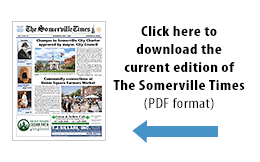
By Francisco L. White
The School Committee held a public hearing to discuss the Massachusetts Model System for Educator Evaluation on June 18, in the Board of Alderman’s chambers. The brief hearing preceded a regular committee meeting as an opportunity for Somerville residents to learn more about the evaluation system and the implications for Somerville Public Schools.
The Massachusetts Model System for Educator Evaluation was designed by the Department of Elementary and Secondary Education. According to the department’s website, the comprehensive system was designed in accordance to the new educator evaluation regulation, 603 CMR 35.00. An eight-part series of documents is in development to aid in the implementation of the new system. The first six are available now and the last two will be published in July 2012 and May 2013 respectively. The series includes guides for planning and implementation at the district level as well as at the school-level. New evaluation regulations apply to teachers, principals, superintendents, and other school system staff whose positions require licensure.
The Massachusetts Department of Elementary and Secondary Education states, “A significant portion of the state’s Race to the Top grant has been allocated to support implementation of the new evaluation framework at both the state and district level. This work includes the development of the Model System, the identification of support providers, and other webinars and training designed to familiarize educators with the requirements of the new regulations and support effective implementation.”
Thomas F. Taylor, current president of the Board of Aldermen, expressed some concern, saying, “Evaluations need to be used to help professionals become better at what they do, not necessarily to penalize them [and] moved toward dismissal.” However, to address such concerns chairman Paul Bockelman referred to the handout given to attendees which says, the purpose is “to promote growth and development of leaders and teachers, place student learning at the center, using multiple measures of learning, growth, and achievement, recognize excellence in teaching and leading, set a high bar for professional teaching status, and shorten timelines for improvement.” Taylor responded, “We need to be aware of what it says here and try to follow it.”
When contacted for comment about the new system, vice-chair Mary Jo Rosetti said, “I am optimistic about using the new evaluation system to improve the way teachers educate children in the classroom and how the new system can help them improve their teaching style, use of resources and collaboration with their colleagues and parents.
It is complex and will take time and care to implement correctly. This is a far more extensive system than we’ve ever had before. It will have landmark implications over the next few years as we seek input from parents and students as well, and as we apply it to the superintendent at the same time since he is now subject to the formal regulations. However, there are more than 250 pages of instructions, matrixes, guidelines, and regulations to go along with this. My vision is that within a few years, we will have teachers in the classroom who will continue to improve with the constructive guidance and professional development we provide as well as the ability to share their best practices.”















Reader Comments